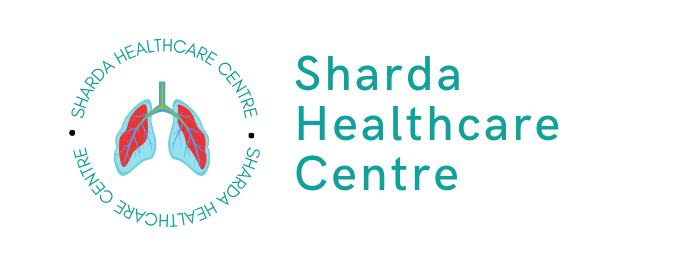Pneumonia is a respiratory disease that affects the lungs, causing inflammation and infection in the air sacs called alveoli. It can be caused by various factors, including bacteria, viruses, fungi, or chemicals. Common symptoms include cough, chest pain, fever, difficulty breathing, and fatigue. Pneumonia can range from mild to severe and can be life-threatening, especially for young children, the elderly, and individuals with weakened immune systems. Diagnosis is typically done through physical examination, chest X-rays, and laboratory tests. Treatment usually involves antibiotics for bacterial pneumonia or antiviral medication for viral pneumonia, along with rest and supportive care. Vaccination and good hygiene practices can help prevent pneumonia.

What is pneumonia disease?
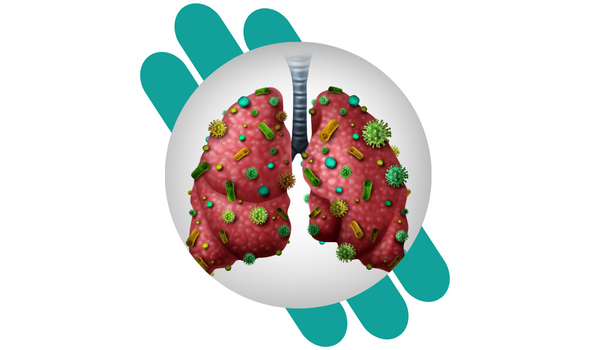
Pneumonia Symptoms:
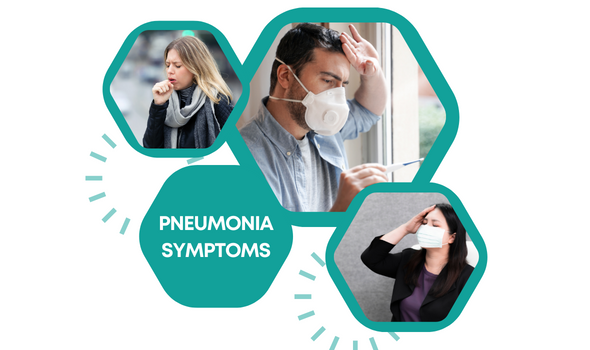
The symptoms of pneumonia can vary depending on the severity and the specific cause of the infection. Common signs and symptoms include:
- Cough: Often producing phlegm or mucus, which may be green, yellow, or bloody.
- Chest pain: Sharp or stabbing pain that worsens with coughing or deep breathing.
- Fever: High body temperature, accompanied by sweating and chills.
- Shortness of breath: Difficulty breathing, rapid breathing, or feeling breathless.
- Fatigue: Feeling tired, weak, or exhausted.
- Rapid heartbeat: Increased heart rate, especially during physical activity.
- Confusion: Particularly in older adults or those with weakened immune systems.
- Sweating and clammy skin: Excessive sweating and cool, damp skin.
- Headache: Often accompanied by body aches and muscle pain.
It’s important to note that symptoms may vary, and individuals should seek medical attention if they experience persistent cough, difficulty breathing, chest pain, or other concerning symptoms.

The pneumonia symptoms by cause are:
The symptoms of pneumonia can vary depending on the underlying cause of the infection. Common symptoms include cough, chest pain, fever, difficulty breathing, and fatigue. Bacterial pneumonia may be accompanied by high fever and productive cough, while viral pneumonia can cause a dry cough, sore throat, and congestion.
Pneumonia symptoms by age are:
The symptoms of pneumonia can also vary based on age. In infants and young children, symptoms may include rapid breathing, wheezing, and poor feeding. In older adults, symptoms may be less pronounced, with confusion, weakness, and a decline in overall health. Fever and cough are common across all age groups.
Pneumonia Treatment:
The treatment for pneumonia depends on the underlying cause and the severity of the infection. Bacterial pneumonia is typically treated with antibiotics, while viral pneumonia may require antiviral medications and supportive care. Treatment also involves rest, staying hydrated, managing symptoms, and, in severe cases, hospitalization for close monitoring and intravenous fluids.
Initial Treatment:
The initial treatment for pneumonia focuses on addressing the immediate symptoms and providing relief. This may involve medications to reduce fever and alleviate pain, such as over-the-counter pain relievers and antipyretics. Rest, staying hydrated, and maintaining good respiratory hygiene are also important aspects of the initial treatment to support the body’s recovery process.
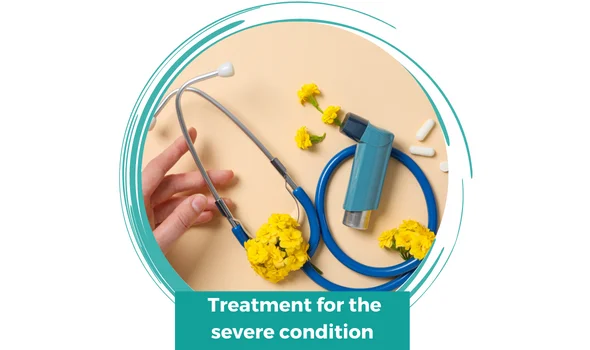
Treatment for the severe condition:
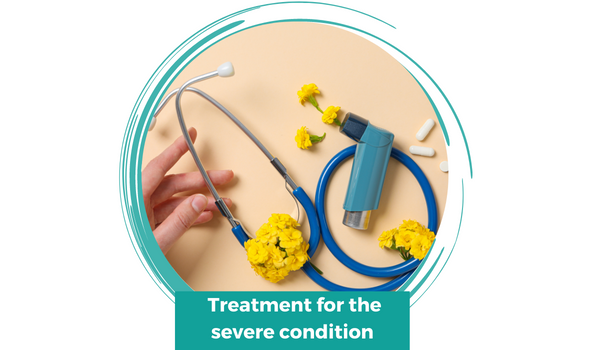
In cases of severe pneumonia, where the infection is causing significant respiratory distress or complications, more intensive treatment measures are necessary. Hospitalization is often required for close monitoring and administration of intravenous antibiotics or antiviral medications. Oxygen therapy may be provided to ensure proper oxygenation of the blood. In some cases, mechanical ventilation or the use of a breathing machine may be necessary to assist with breathing. Other supportive measures, such as intravenous fluids, fever control, and pain management, are also employed. Treatment for severe pneumonia is tailored to the individual’s condition and may involve a multidisciplinary approach involving pulmonologists, infectious disease specialists, and critical care teams.
Types of Pneumonia:
There are different types of pneumonia, including bacterial pneumonia, viral pneumonia, fungal pneumonia, aspiration pneumonia, and healthcare-associated pneumonia. Each type has distinct causes, treatments, and characteristics.
Type of Pneumonia on the basis of cause:
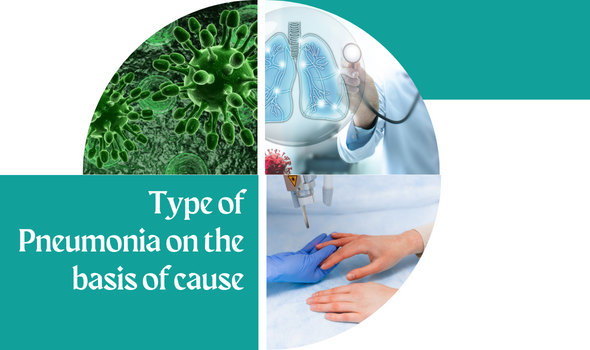
Pneumonia can be categorized into different types based on the underlying cause:
- Bacterial Pneumonia: Caused by bacteria such as Streptococcus pneumoniae, Haemophilus influenzae, or Staphylococcus aureus.
- Viral Pneumonia: Caused by viruses such as influenza, respiratory syncytial virus (RSV), or coronavirus (including COVID-19).
- Fungal Pneumonia: Caused by fungi like Pneumocystis jirovecii, commonly affecting individuals with weakened immune systems.
- Aspiration Pneumonia: Caused by inhaling foreign substances, such as food, liquids, or stomach contents, into the lungs.
- Healthcare-associated Pneumonia: Acquired during a hospital stay, often caused by multidrug-resistant bacteria and associated with ventilator use or other healthcare interventions.
Each type of pneumonia requires specific diagnostic and treatment approaches.
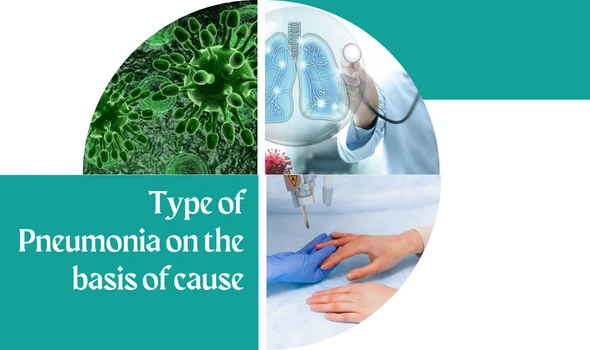
On the basis of location:
Pneumonia can also be classified based on the location where the infection was acquired:
- Community-acquired Pneumonia (CAP): Develops outside of healthcare facilities and is commonly caused by bacteria such as Streptococcus pneumoniae.
- Hospital-acquired Pneumonia (HAP): Occurs 48 hours or more after admission to a hospital and is often associated with multidrug-resistant bacteria.
- Ventilator-associated Pneumonia (VAP): Develops more than 48 hours after intubation and mechanical ventilation, usually caused by bacteria from the patient’s own respiratory tract or the healthcare environment.
The distinction helps guide treatment decisions, as different types may require different antibiotics and management strategies.

On the basis of Acquiring:
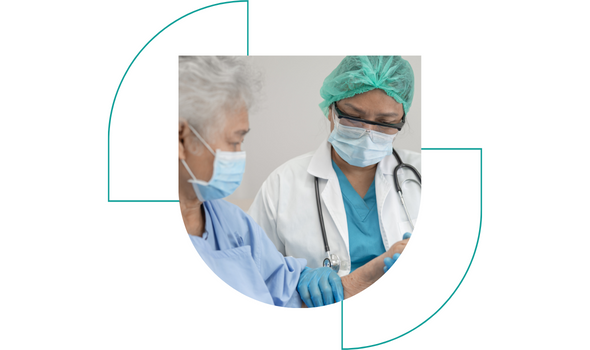
Pneumonia can be classified based on how it is acquired:
- Community-acquired Pneumonia (CAP): Acquired outside of healthcare settings, such as at home, school, or in the community.
- Hospital-acquired Pneumonia (HAP): Developed during a hospital stay, typically after 48 hours of admission.
- Ventilator-associated Pneumonia (VAP): Acquired more than 48 hours after being on a ventilator in an intensive care unit.
These distinctions are important for determining the likely pathogens involved and guiding appropriate treatment decisions.
Quick Contact
Address
70, 46, Patel Marg, opposite Rastogi Gas Agency, Mansarovar Sector 7, Agarwal Farm, Sector 9, Mansarovar, Jaipur, Rajasthan 302020
deveshkanoongo0701@gmail.com
Phone No.
9024605799, 9414774975
